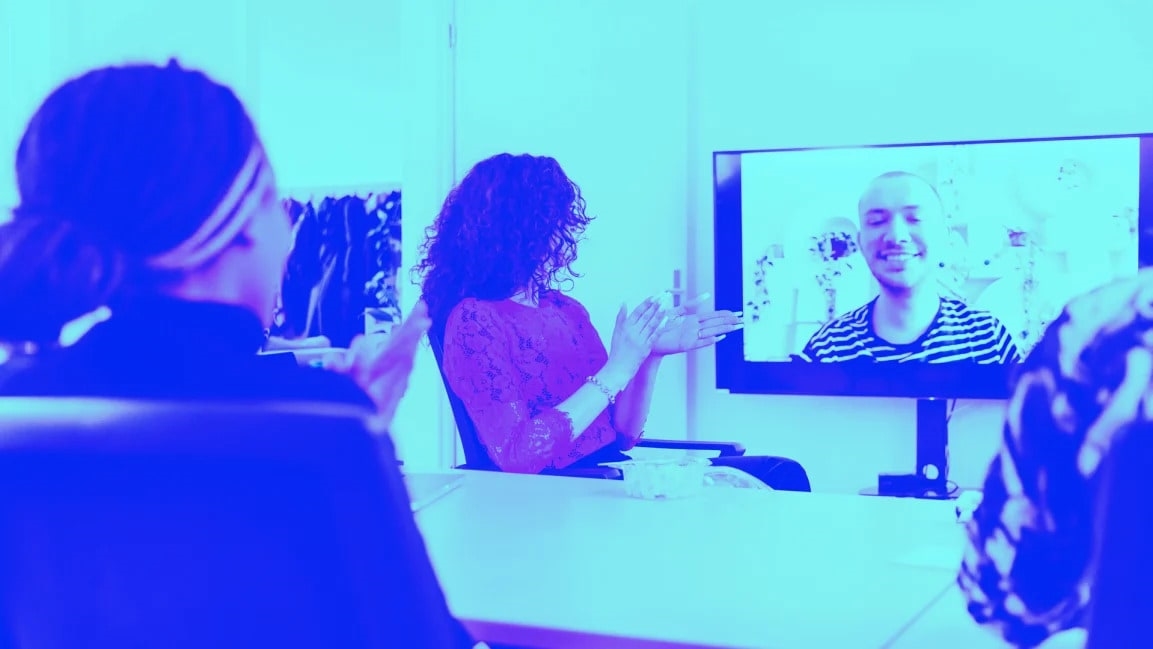These big-screen video chat tricks will make your next Zoom more enjoyable
While video chat is no replacement for in-person interaction, sometimes it’s the best you can do.
I’ve never loved chatting through tiny screens, though. It just feels so distant to hunch over a phone or laptop, staring at a considerably shrunken version of whoever I’m talking with. That’s why it’s nice to conduct video calling through your TV instead. When there’s a life-size person on the other end, it helps conversations feel more lifelike.
This does require a bit of hardware that you might not have already, but now that video calling has become an accepted way to chat from afar, the extra pieces might be a worthy investment. Here are seven different ways you can get set up for video chat on the television:
Fire TV and Zoom
With Amazon’s second-generation Fire TV Cube and a USB webcam, you can turn your TV into a big screen for Zoom calls. The webcam provides the video, while the Cube’s built-in microphone array picks up the audio. (Amazon’s new Fire TV Omni televisions support Zoom calls as well.)
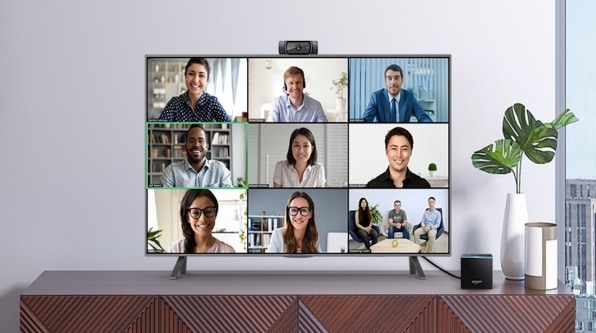
To use Zoom on the Fire TV Cube, you’ll need a compatible webcam—Amazon recommends Logitech’s C920, C922X, or C310—along with a USB OTG adapter for plugging it into the Cube’s Micro-USB port. Install the Zoom app on your Fire TV remotely through Amazon’s website, or find it in the app store using the voice remote (just say Zoom!).
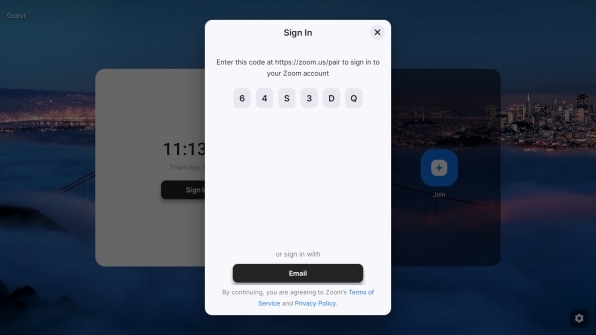
Once you’ve launched the app, use the Sign In button to connect your account, then optionally set a PIN so no one else can access Zoom on your behalf. You can then start a new meeting, enter a meeting ID, or join upcoming meetings from your calendar. If you’ve connected your calendar to Alexa, you can also use the voice remote and say, Join my next meeting.
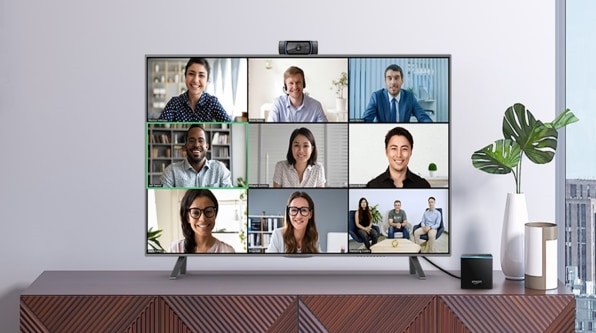
Note that if you push the Fire TV Cube’s mute button to disable Alexa, it’ll cut off your camera as well. And by default, meeting audio will play through the Cube’s built-in speaker. To play the audio through your TV instead, hit the gear icon in the bottom-right corner, scroll down to “Speaker,” and select your TV from the list.
In addition to Zoom, you can place calls to other Fire TV and Echo users with Alexa Calling. To see which of your contacts have Alexa Calling set up, head to the Communicate tab in the Alexa mobile app, then hit the Call button.
Android TV and Google Duo
Android TV devices, such as the Nvidia Shield TV and Chromecast with Google TV, also support video chat through external USB webcams, but only with Google Duo.
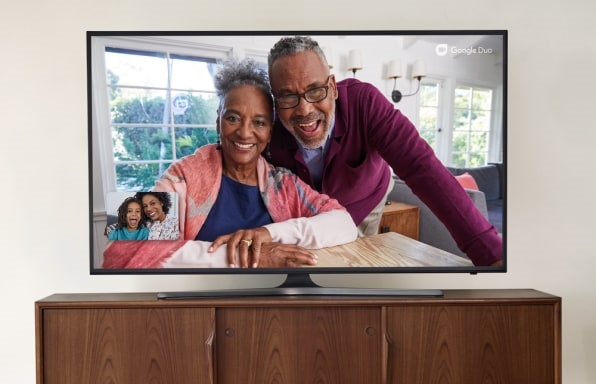
Depending on your device, you may need either a USB-C hub or Micro-USB OTG power adapter, which can deliver power to the streaming device while adding a USB-A port for the webcam.
Once everything’s connected, download the Google Duo app on your Android TV device. When you launch it for the first time, select “Allow” for all the on-screen prompts. You’ll then be able to select a contact or set up a group call.
Chromecast and Google Meet
While using Chrome on a laptop or desktop computer, you can mirror Google Meet calls on Chromecast streaming devices, Vizio SmartCast TVs, and Android TV devices.
During any meeting, just tap the vertical three-dots menu button at the bottom of the screen. As long as your Chromecast is on the same Wi-Fi network, you’ll see a “Cast this meeting” button at the top of this menu. Click the button and select your Chromecast device to begin mirroring the conference video onto your TV.
You’ll still need to use your computer’s camera and microphone, of course, and the meeting’s audio will play through the computer rather than the TV. Still, mirroring can be helpful for sharing a video call with an actual roomful of people.
Chromecast screen mirroring
To use Chromecast with other video-conferencing services, you’ll need to use screen mirroring, which requires an Android phone or a computer running the Chrome browser.
To mirror your Android screen, download the Google Home app, then find and select your Chromecast-capable device in the main menu. You’ll see a “Cast screen” option at the bottom of the next screen. Again, you’ll want to prop your phone or tablet up near the TV. The biggest challenge here will be to convince your iPhone-using friends to adopt Google Duo instead of FaceTime.
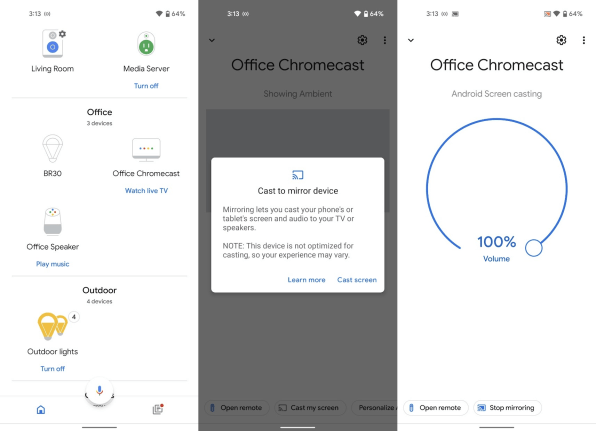
To mirror your computer screen, click the vertical three-dots menu in Chrome, select “Cast…,” then click the “Sources” drop-down menu, select “Cast desktop” and choose your Chromecast device from the list.
Be aware that Chromecast mirroring will drain your phone or laptop battery in a hurry, so keep it charged up or plugged in.
iOS and AirPlay
If you have an iPhone or iPad, Apple’s AirPlay feature can wirelessly stream video to a TV. For this, you’ll need either an Apple TV box ($150 for the HD model, $180 for 4K), a compatible Roku device, or an AirPlay-compatible smart TV.
To get started, swipe down from the top-right edge—on all iPads and on the iPhone X or newer—or swipe up from the bottom of the screen to bring up Control Center. Tap on the icon that looks like two overlapping boxes, then select your AirPlay device from the list. Switch to the appropriate input on your television, and you should see your iOS device mirrored on the larger screen.
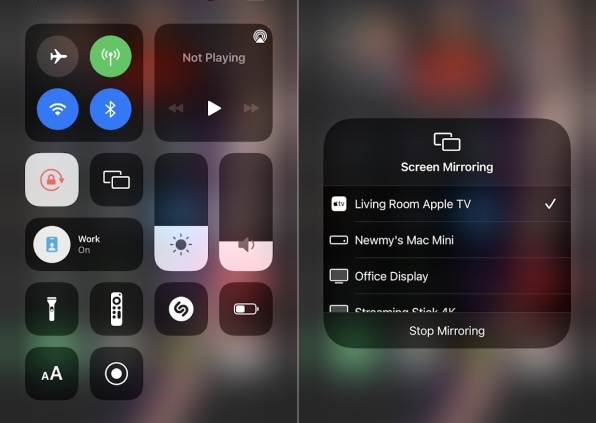
At this point, you can use FaceTime or any other video chat app as usual. Your iPhone or iPad will still supply the camera and microphone, so consider propping it up against your TV or directly below it. That way, you can easily keep an eye on the big screen while looking into the camera on your phone or tablet.
Macs also offer AirPlay, so you can use a similar setup to stream your video chats wirelessly—but I recommend a hard-wired connection, as explained below in “Laptops and Cables.”
iOS and an HDMI adapter
The main downside with AirPlay is that it plays audio through your TV’s speakers. If your device is too close, or the TV is too loud, people you’re talking to will hear their own voices echo back.
For a cheaper approach that works with any modern TV and eliminates the echo problem, use a Lightning-to-HDMI adapter instead. In my testing of Apple’s official $49 Lightning Digital AV Adapter, audio continued to play through my iPad even with video on the television, so it didn’t pick up any echo. You could also try an unofficial adapter, such as this $20 one.
Here, the setup is even simpler than AirPlay: Just plug the adapter into an HDMI cable, hook the cable up to the TV, and switch to the appropriate input.
Facebook Portal TV
I have not used Facebook’s dedicated TV device, but it is an option for video calling via Facebook Messenger, WhatsApp, and Zoom. The $150 device has a built-in camera and microphone, sits on top of or below your TV, and plugs in over HDMI. (I still think Apple would be wise to build this exact type of device itself, but that’s another story.)
Laptops and cables
If all else fails, you can always connect a laptop to your television over HDMI.
Does your laptop have an HDMI port? If so, you’re in luck. Just plug an HDMI cable from the laptop straight into your TV. For HDMI-less Macs and Windows PCs with USB-C ports, you can use a USB-C to HDMI cable, such as this one.
Once you’re plugged in, press Windows+P on a Windows laptop to switch between display modes. Choosing “Second-screen only” will disable your laptop’s screen while it’s connected to the TV. If you have a 4K TV, you may also want to right-click on the desktop and choose “Display Settings,” then reduce the screen resolution to 1920 by 1080. Otherwise, you could get choppy video as your laptop struggles to handle a 4K picture.
On a Mac, there’s no way to disable your laptop display with a TV or external monitor connected, but you can turn brightness down all the way for a similar effect. If everything seems too small on your 4K TV, head to Apple > System Preferences > Displays, select “Scaled,” then choose the option below that says, “Looks like 1920 x 1080.”
As with the other mirroring options above, your laptop should be right in front of the TV for the best results—which shouldn’t be too difficult since they’re tethered by an HDMI cable.
(58)


